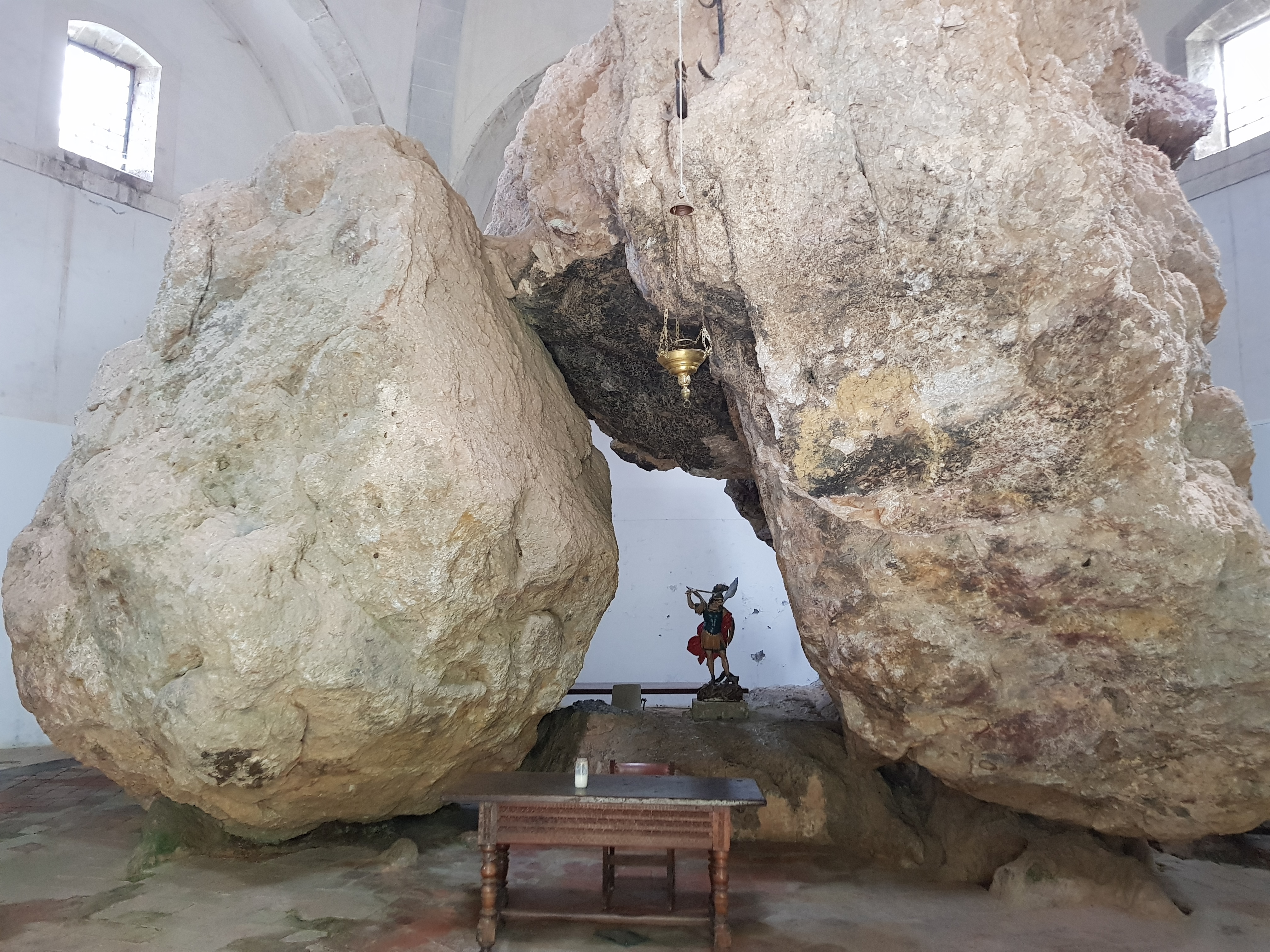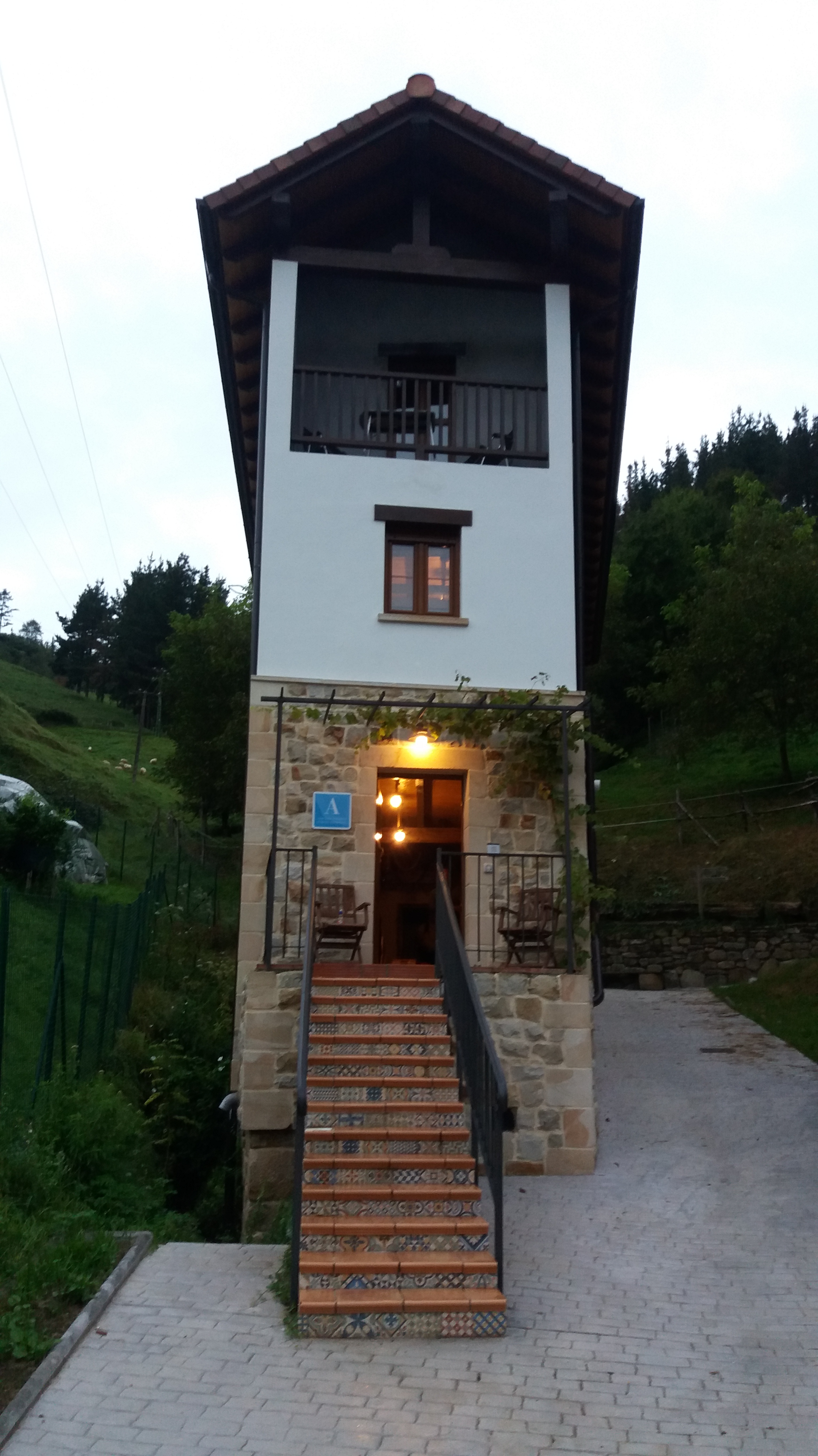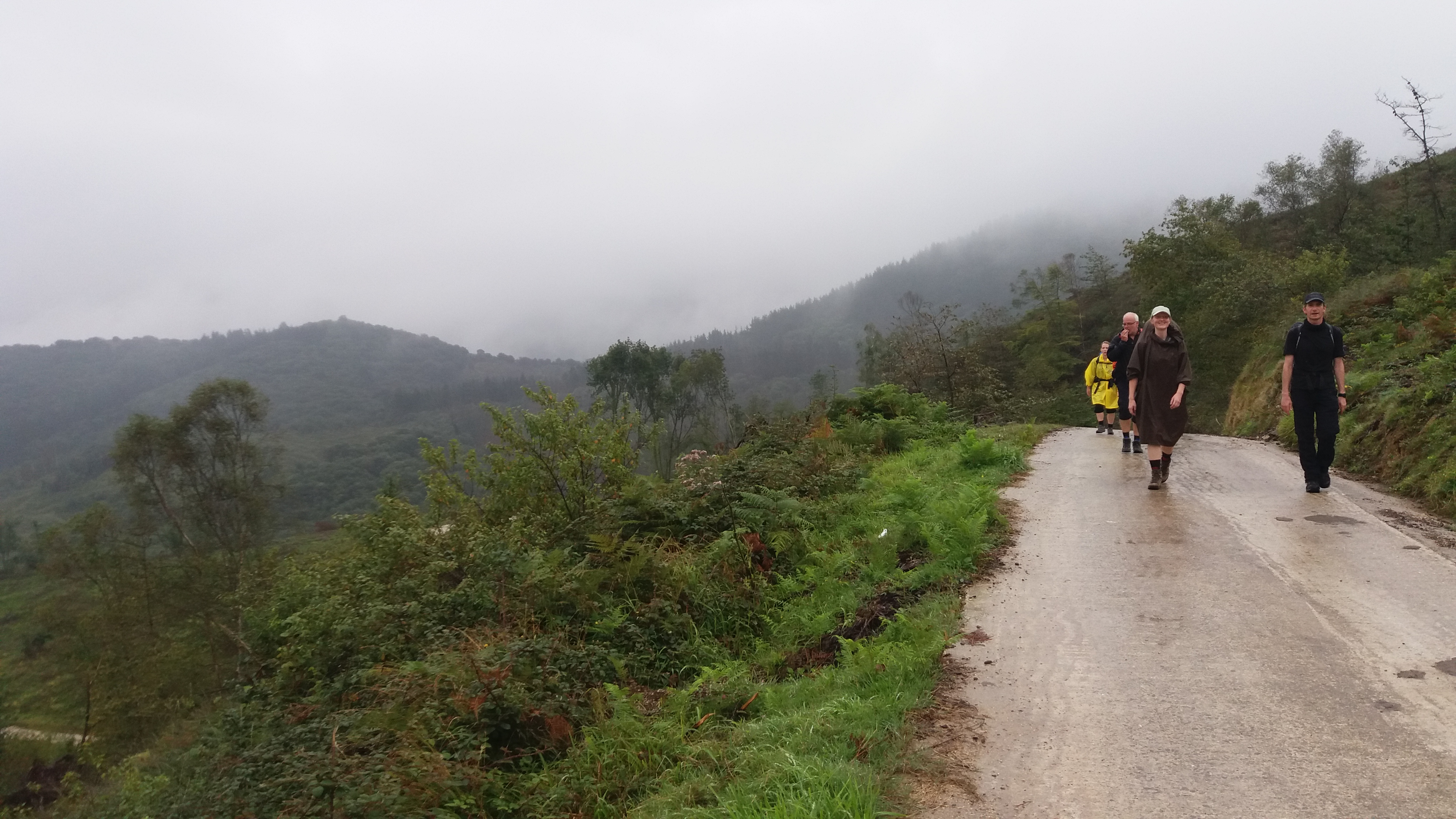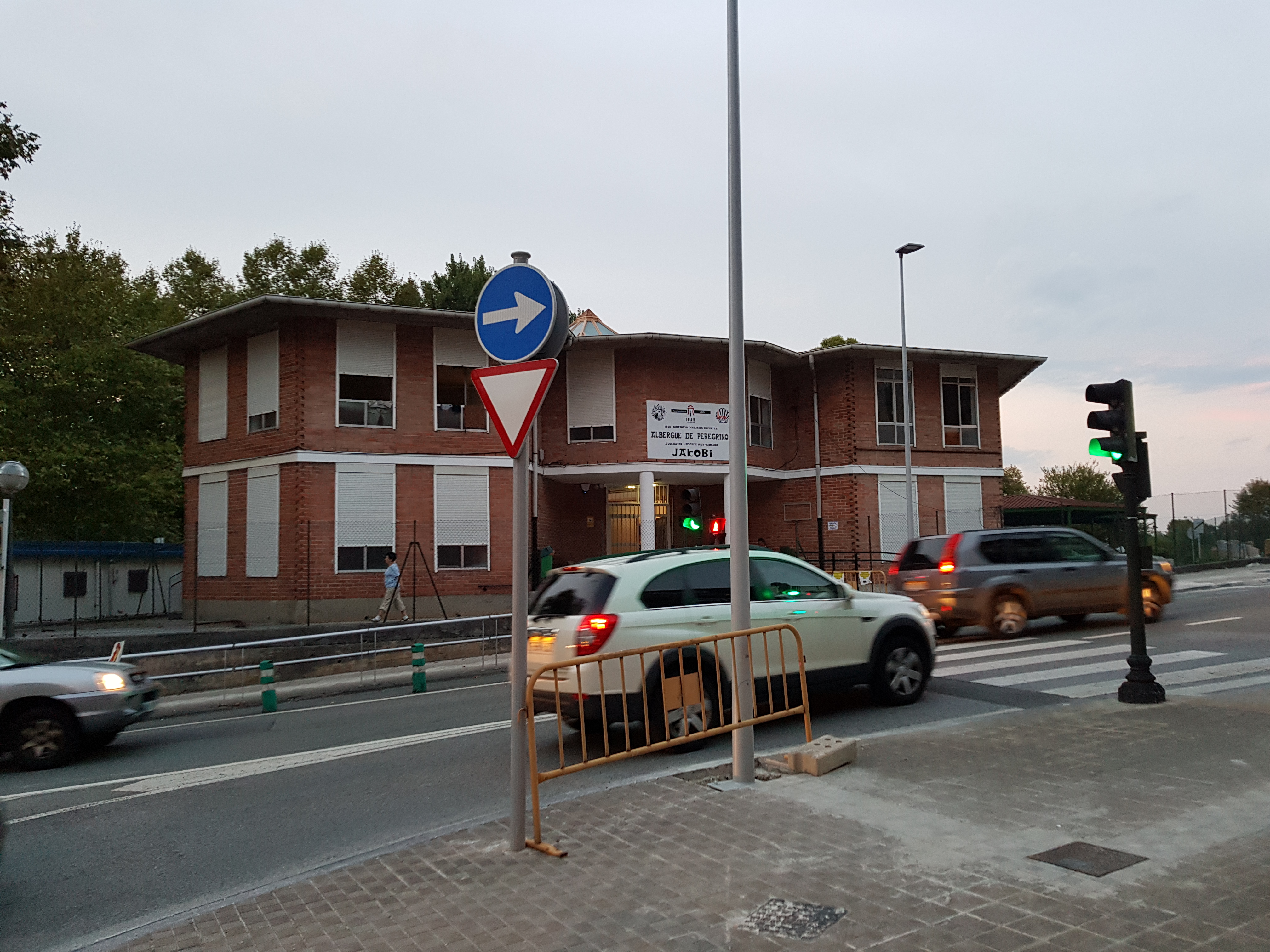September 13, 2018: What can happen when you are accompanied all day by two Dutch nurses, even if one of them is male. A lot of nice things…
The night in Arnope was as expected – muggy, stuffy and loud. Some, like Katrin, had been driven out of their beds and into the small lounge area. Here I sneaked in at night, too, but only to get my soaked and crumbling purse that had been lying there all the time. So my guardian angel could finally take a nap.
We got ready for the march very early in the morning and set off in the darkness in a light drizzle. Vasek and I were joined by Katrin and Hannah, a nurse from the Netherlands. I had agreed with her to lead her under the pseudonym “Gwendolyn”, but only if I would write bad things about her. But I never intended that at all.
So we stomped through the forest, which was dark but not bitterly cold. In the beginning you were still well dressed with a T-shirt. Only in the further course the rain increased, so that we had to take a rain jacket and shrill coloured backpack condoms.
Unfortunately, or rather to our great luck, the ladies running ahead misinterpreted a yellow and white hiking trail marking and interpreted it as a Camino arrow. So we ran wrongly downhill to a small village. A stroke of luck because we met Stijn, a nice male nurse from the Netherlands, with whom Hannah had already spoken the evening before. Imagine the dutch showmaster Rudi Carell, about forty years old, with a black baseball cap, black jacket and trousers, that’s basically how he looked with his distinctive nose.
Stijn didn’t lead us through any show, but back on the right track and stayed with us for the next few days, just like Hannah.
In Olatz at the church we did not go bananas but had them for breakfast. Strengthened again we started the 19 km long way to Morkina-Xemein. This meant at the beginning a long ascent of over 500 meters. Because of the raindrops on my glasses I could hardly see the stony and hard to walk path. But finally the rain stopped and we all had a clear view.

The route from the highest point was a high trail through the forest. There were no water points along the whole route and the few springs were not drinkable because of the high iron content of the water.
We stopped at an abandoned farm in the middle of nowhere and ate a snack together, interrupted by the chatter of two American Tourigrinas of advanced age. Their rucksacks were just enough for the occasional coming-together, but too small for a real pilgrimage. Apparently they had ordered a kind of luggage service.
On a hill with a beautiful view we met the German couple again, who had accompanied Katrin the day before and overtook us from time to time, only to be passed by us again. From here on we lost sight of Katrin, who had probably walked on with them.

As we walked on to Bolibar and I assumed – wrongly – that she only wanted to walk to Markina-Xemein, I assumed that day that we would probably not see her again. This made me think about unexpected separations without goodbyes, especially in connection with the death of people close to me. Here I was presented with important insights from the Camino that day.

In Markina-Xemein, at the famous chapel with the rocks, we met for the first time a giggling Korean who was to meet us several more times.
At a bar in the center I let Hannah and Stijn convince me (important: not persuade me) to walk even further to Bolibar while having a glass of Estella. In their app they had found a hostel that was not listed in my travel guide.
My knees hurt from the murderous descent into the city before, but the delicious Café con Leche had encouraged me to get even more out of the day. So we walked past the public hostel, offered our greetings to the Alaskan snoring artists who had just descended there, and set off on a path that was of course again marked by crisp climbs. It led us to Bolibar, the place where the family of the South American freedom fighter Simon de Bolivar lived and where there is also a corresponding museum.

In the middle of Bolibar we met Peter, who immediately invited us to come to the hostel inhabited by him and Nico. We trotted after him and came across a cute narrow house that looked as if it had been kidnapped from the old town of Bremen. The house was brand new and really cosy, the top floor had not even been finished yet.
So we called, as requested by a note, the Hospitalero Rafa, who appeared in horse-riding clothes after a short moment and showed us around in the small house. He also told us a little bit about the horse, then he went into the garden and groomed it further.
In the kitchen there was a washing machine with a built-in dryer, which we gladly entrusted with our clothes.
On the small terrace in front of the entrance I enjoyed a glass of wine with Peter, Nico and Hannah and talked to the loved ones at home for a long time, while the others went to the only open bar in town. I joined them later and could end the day with a small bite and a good drop of Rioja.
All that remained was to take the laundry out of the machine and distribute it to the right people before I dropped into bed, not without first providing Hannah with tips on foot care and some zinc ointment.
Conclusion of the day: The Camino spontaneously brings you together with great people and it also spontaneously separates you from them.




